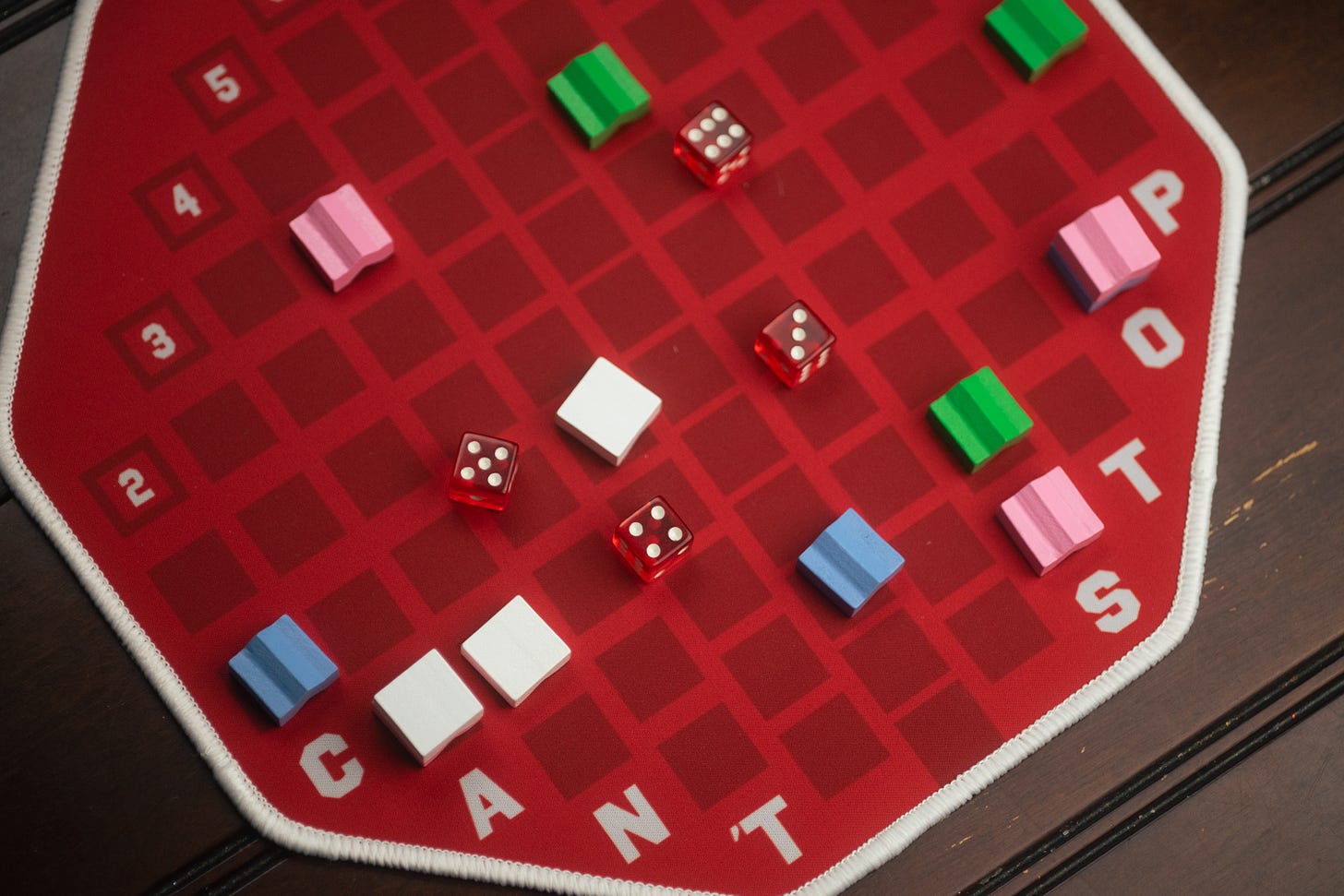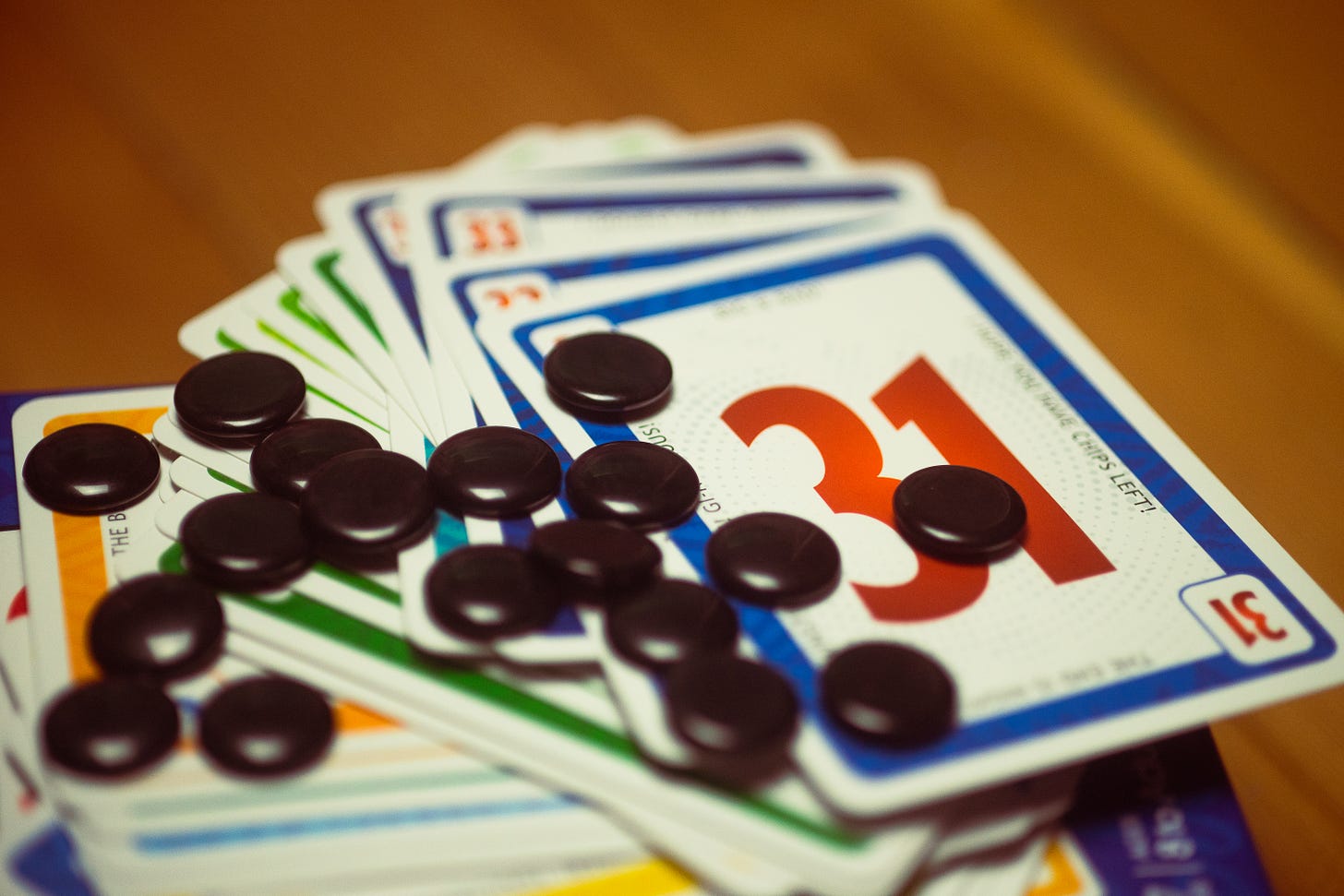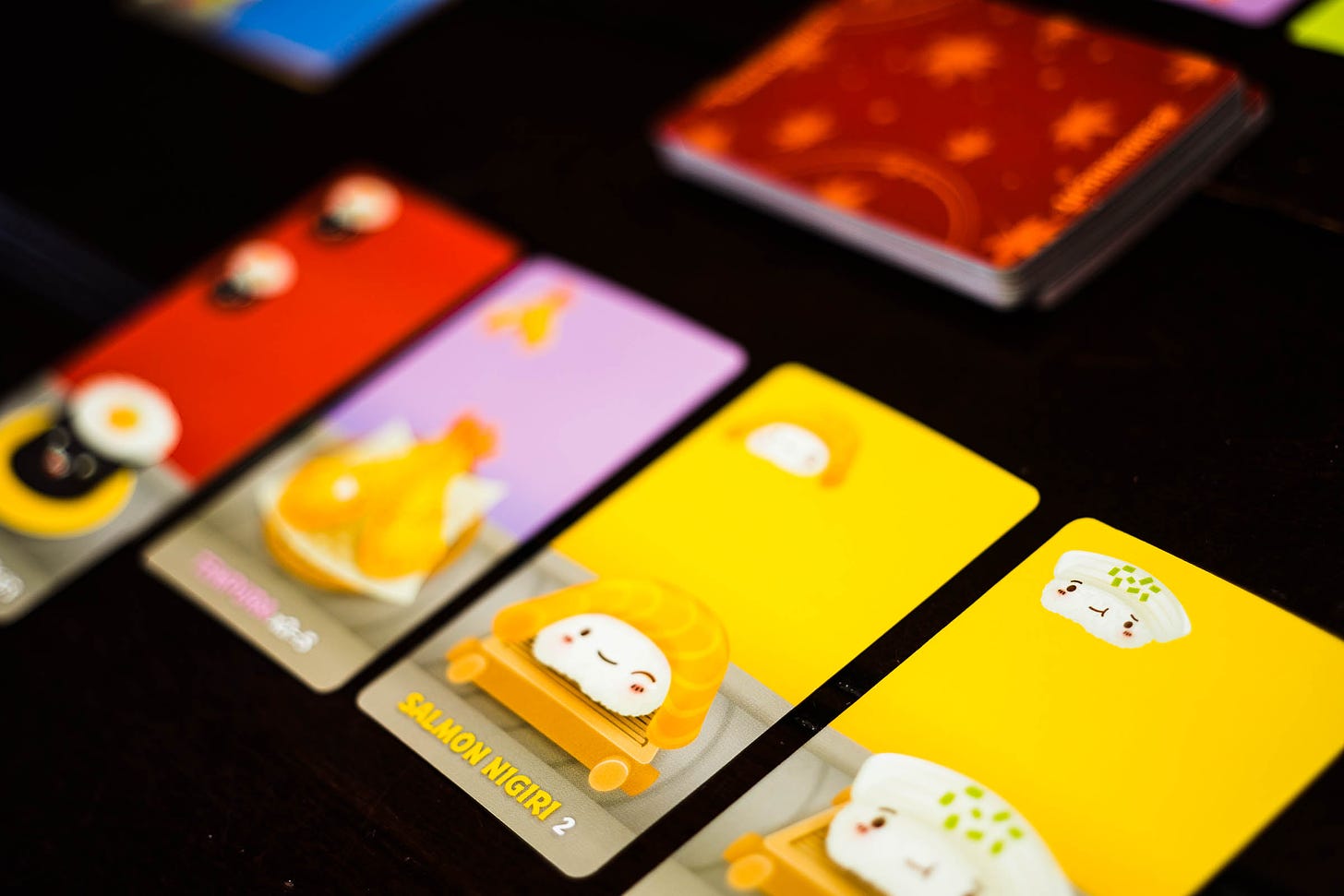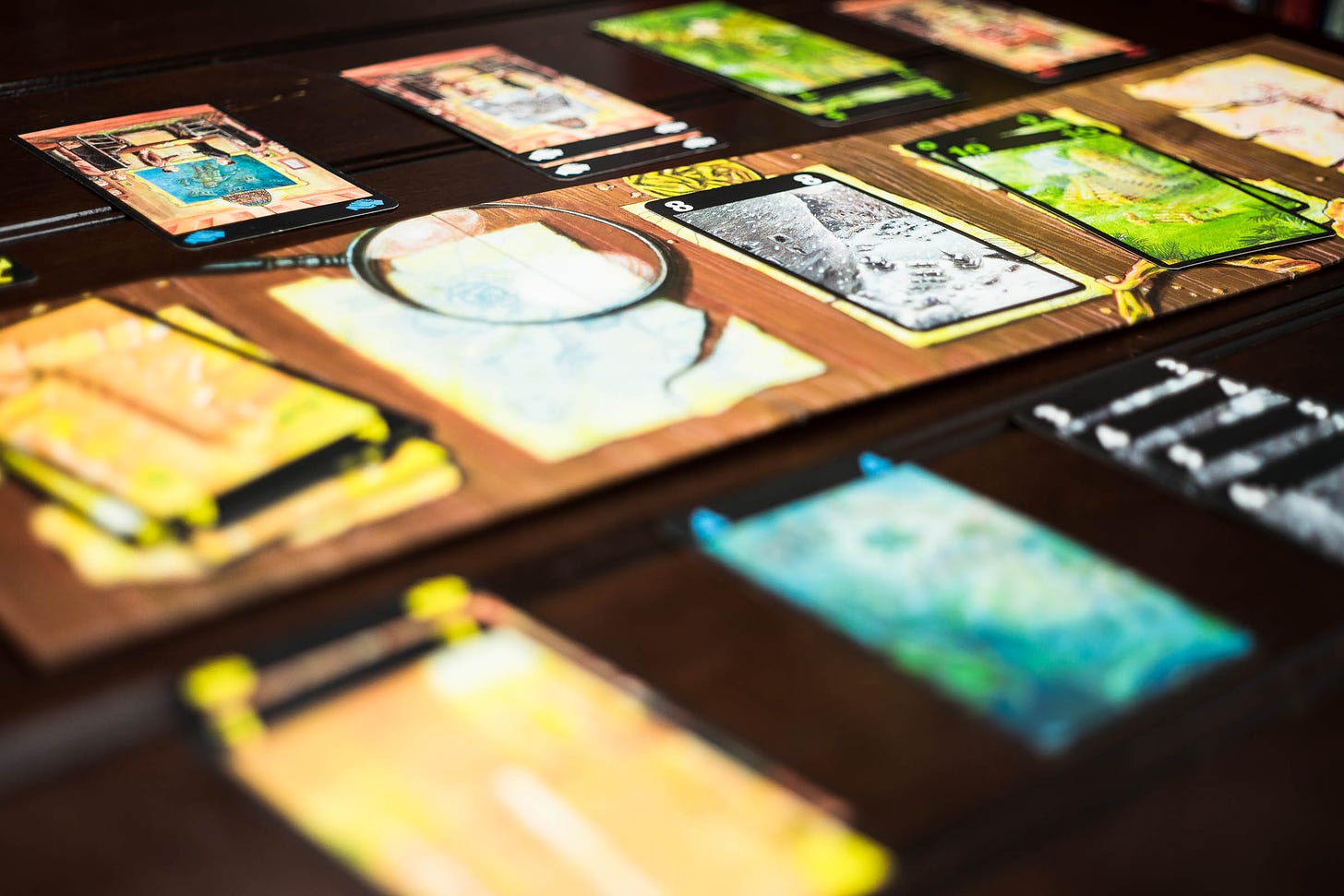Eight games to replace Exploding Kittens
These games are approachable, easy to teach, and clever.
Once again, my “Replacing the Classics” has emerged from its lair, and with that, I should give you a reminder. I’m not aiming to help you replace the games you already enjoy. I’m aiming to help you replace the games you wanted to enjoy but ultimately didn’t, the games that you played a few times before they felt a bit too long in the tooth. I want to help you find games you love, not just games you like or (shudder) tolerate.
Am I successful in that remit? I suppose you’d have to tell me. Regardless, I want you to know that I’m not here because I think Exploding Kittens deserves to be thrown in the bin, but because I’d understand and sympathize if you were ready for a very different sort of card game.
It’s not like Exploding Kittens is an outright awful game, but it comes with a few flaws. The biggest is probably my most common complaint about light-weight mass market games: Making progress is something you sometimes can’t help — you’re stuck in one state, and maybe, by random chance, you’ll change your state. The second is another big one: Player elimination. It comes in the form of great tension, but that tension is also one of the game’s biggest downfalls.
There are advantages to games like Exploding Kittens. Don’t get me wrong here. I get why it’s successful, and I don’t want to begrudge the game that. It’s easily accessible (pass or play, then draw — it’s near-universal) and doesn’t take a whole lot of thought to play. Again, that’s not me passing judgment. Not every game needs significant depth or complexity, and Exploding Kittens’ lack of both emphasize the game’s most important element: its art. The popularity of web comic The Oatmeal is nearly entirely responsible for the rise of the game.
(It’s a funny thing. I remember reading The Oatmeal in its first couple of years somewhat infrequently. I was a regular web comic reader at that point, but I gravitated toward Cat & Girl, which is still a stupendous comic. That’s neither here nor there, really. Still, isn’t it interesting that one of the more financially viable board games of the last decade is based on a web comic? I think it’s very interesting.)
Well, if you’ve made it this far, I suppose I should give you the games I promised. I’ll focus on games that are easy to teach, easy to learn, and easy to play. That really is a benefit of Exploding Kittens that we oughtn’t miss in our evaluation. The game works because it doesn’t overcomplicate matters.
These games are good replacements for Exploding Kittens, not because they mimic the feel exactly or feature popular web comic art, but because they’re great games for reasonably small groups, are quick to teach, and don’t take too long to play. They’re also packed with fun, and your turns are at least somewhat meaningful. Most importantly, a number of these games ramp up the tension with risky actions and uncertainty, but they don’t do it in a way that leaves you bereft of choice.
Can’t Stop
I cannot get enough of Can’t Stop. I’ve played so much of it on Board Game Arena. I’ve played so much of it in person. It’s just a fantastic game, and it offers basically no depth. There’s no difference replaying it at any given time. It doesn’t have a single expansion, nor does it need one.
The premise of Can’t Stop is a simple one. Each player is trying to summit three columns, which are marked 2 to 12. On your turn, you’ll roll four six-sided dice, forming two pairs of those dice. You can move up on the columns indicated by each pair’s sum. Rolling, for instance, 4, 5, 6, 1 would give you a lot of options: You could make 9 and 7, 10 and 6, or 5 and 11. Easy enough, but on each of your turns, you can only move up on three columns. Your turn consists of as many dice rolls as you’d like, and you only have to stop if you can’t move. Because you can only move on three columns in a turn, that means you’re always a little in danger. That’s fun, right? I think so. If you choose to stop, you lock your progress for the turn. If you don’t choose to stop but you can’t move, you’ll lose all of your progress, moving back on a column to where you started the turn. It’s painful. I love it.
Once a player has reached the top of a column and stopped, that column is now blocked off, and no player can move on it again. Often that means the more common rolls, like 6, 7 and 8, are blocked off early in the game, and you’re at the whim of the dice to decide if you can do anything on your turn. Once one player has reached the top of three separate columns, they win, and the game ends.
Can’t Stop is full of that tension. You’re constantly rolling dice and wondering if you’ve done yourself in by not stopping. Everyone around the table will react when you make a great roll or a poor roll, and that’s the mark of something incredible.
Designed by Sid Sackson, published most recently by Eagle-Gryphon Games. Can’t Stop plays 2–4 players.
No Thanks!
One of my favorite games to break out with players looking for something light is No Thanks!, a little push-your-luck (in a sense) game where the thing you’re up against is the whims of the players before you in a turn. This one’s simple: There are cards numbered 1 to 35 in a deck, and those cards are worth points, which you do not want. Some of them are removed and left out of the game, and the rest are shuffled. Card by card, they’ll be refused and picked by players.
Each round is basically deciding who will take the card, which will give you points — and points are indisputably bad. If you don’t want to take the card, you’ll place one of your tokens on it, and you’ll utter two famous words: “No thanks.” If you want to take it (and there are reasons to do so), you’ll just take the card, as well as all the tokens on it. Those tokens are now yours to do with as you please, and they’re also worth one negative point. Great!
The twist here is that if you manage to secure an unbroken sequence of cards, you’ll only score the lowest number in the sequence. If you’re sitting on a run from 21 to 25, you’ll only score 21. But if a number is missing in there — say you have 21 to 23 and 25 — you’ll score 21 and 25. That adds an interesting dynamic, wherein players might want to sabotage you to protect their own scores, but will anyone be willing to do so at cost to themselves? Will everyone let you complete that sequence just to save themselves the pain of taking a card? Have you forgotten that somebody is out of tokens, and they’ll be obligated to take the card?
The dynamics here are always interesting, and that tension is basically what Exploding Kittens is trying to pull off. This game doesn’t have cute pictures of cats, but it does have drama. You can’t beat that.
Designed by Thorsten Gimmler, published by AMIGO. No Thanks! plays 3–7 players.
Sushi Go
If you’re looking for a card game with great art, Sushi Go might be the best place to make your first stop. This well-established drafting game is all about picking sushi off the conveyor belt as it goes by, and you get points for the pieces of sushi and other sushi-related items you collect. Some are worth points on their own, like nigiri, while others, like tempura and sashimi, are worth points in sets. Chopsticks allow you to swap for cards later in the round, and wasabi improves your nigiri scores.
Sushi Go does lack some of the tension of Exploding Kittens, but the biggest benefit here is that Sushi Go isn’t tough to figure out, and nobody has to deal with being eliminated early. I will happily trade that tension — “will I be next?” — for a game that’s delightful.
This is a genuinely good game, and while you might argue it’s been supplanted by Sushi Go Party or some other drafting game, this remains one I really enjoy playing with new players. Seeing somebody experience a card game that isn’t punishing or mean, while still allowing for meaningful interaction and the opportunity to take some action that hurts your opponents’ chances — that’s the stuff right there. Serve that up with some pickled ginger.
Designed by Phil Walker-Harding, published by Gamewright. Sushi Go plays 2–5 players.
Nana Toridori
This list wouldn’t really be complete without an obscure trick-taking/climbing-shedding game, would it? That’s just what you have come to expect with me, and I aim to meet your expectations. Nana Toridori is a climbing game in which you’re trying to be anyone but the last player out of cards.
A lot of climbing games stop after one player is out of cards, but Nana Toridori flies in the opposite direction. Each round ends after all but one player has shed their hand, and the player who doesn’t will lose one of their two penguins. If a player loses both of their penguins, the game ends, and they’re the sole loser.
The trick play in this one is interesting, too. You can’t rearrange your hand, though you’ll have opportunities to add new cards to it as you play. Rather than being able to play a variety of melds, you’re limited to sets of identical numbers — you could play a single 8, four 8s, three 9s, that sort of thing. You can play a stronger meld after a player leads with any meld, meaning it either has more cards or the same number of cards with a higher number.
When you beat a meld, you can optionally take the cards you beat and put them into your hand. They must go together, but they can go in any position of your choice. If you’re not able to beat a meld or choose to pass, you’ll draw a card (at least at long as there are any — there aren’t too many to draw) and either place it in your hand or discard it.
This is one of my favorite simple trick-takers and climbers to play with new players. It’s fast to teach, and the cards are gorgeous with art from Kotori Neiko. It’s not too hard to find a copy if you’re familiar with importing from Japan, and sites like Tricky Imports regularly keep it in stock.
Designed by Toshiki Arao and published by Arclight. Nana Toridori plays 2 to 6 players.
Four more great card games
Take Five (6 nimmt! in the original German) is a risk-taking card game in which you’re placing numbered cards in rows in ascending order. Each row can only hold five cards, and if you end up placing the sixth card, you’ll take the first five cards as points. It’s a cool, tense game, I promise — I’m just not experienced enough at the game to explain it more fully. Yet. Designed by Wolfgang Kramer, published by AMIGO. Take Five plays up to 10 players. Wow!
Sea Salt & Paper doesn’t fit the has-tension bill, but it does fit the has-cute-art bill. The whole thing is filled with origami art, and it just looks really nice. It’s a pretty simple set collection game with some cool ideas. Designed by Bruno Cathala and Théo Rivière, published in English by Pandasaurus Games. Sea Salt & Paper plays 2–4 players.
The Mind is a weird game. The art’s weird. The idea is weird. But you know what the game has? Tension, and it’s got it in droves. The idea is simple: Play cards in ascending order. Cooperatively. And don’t talk. This was such a hot game for a minute, and it’s cooled, but it’s still highly unusual. Give it a whirl. Designed by Wolfgang Warsch, published by Pandasaurus Games. The Mind plays 2–4 players.
Lost Cities is a superb two-player game in which you’re setting out on expeditions, taking risks, and trying to score big points. Tension emerges because embarking on an expedition (or, if you’d like the slightly more boring version, ‘placing the first card in one of the five columns’) incurs a cost of 20 points. You can only play cards in a column in ascending order, and you’ll earn points for the values of each card. You can also double, triple or even quadruple the value of your expedition, but that applies to negative values, too. Designed by Reiner Knizia, published by KOSMOS. Lost Cities is exclusively for two players.
Thank you, as always, for joining me here at Don’t Eat the Meeples. I can’t believe October’s drawing to a close. The year’s just flown by, hasn’t it? My little one-year-old is going on and on these days, and I suspect it’s only a matter of time before he discovers the unwieldily large collection of board games in the basement. That will be an exciting day. What games have you played with your kids? I’d love to know.
Next week: Board games to play with a large family.








I’m going to order Nana Toridori as a Christmas gift, thanks for the recommendation!